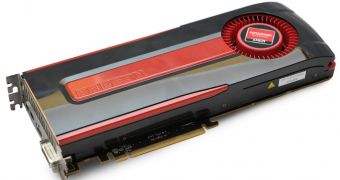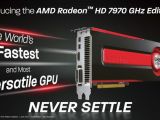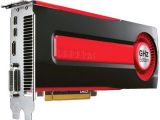AMD’s Tahiti GPUs seem to be a complete success. Even if its GPUs are bigger, hotter and half a year older than Nvidia’s Kepler, AMD is able to achieve very high frequencies, beat dozens of benchmark records, beat Nvidia’s chips in most non-Nvidia optimized games and offer ten times the GPU compute performance in DP FP64.
The company is well-aware that all these might easily go away, as Nvidia’s Kepler is a very efficient GPU design – quite a bit more powerful than AMD’s Tahiti, as it is able to compete despite having over half a billion less transistors and a 33% narrower memory BUS.
Therefore, AMD is simply increasing the frequency ratings of its Radeon HD 7950 video card specifically to better compete with Nvidia’s GeForce GTX 670.
One other move is that the fabless GPU and CPU designer is reportedly allowing its partners to build custom boards with modified PCBs, cooling systems and increased frequencies.
It is not like AMD’s Radeon HD 7000 has not been already modified in every way imaginable including a 12-cm cooling fan and an additional extra VRM card, but now AMD is setting the pace by clocking its own reference design at over 1 GHz GPU speed.
Sources indicate that the rest of the specifications will remain the same, as the card will boost 1,792 shader cores with the new GCN architecture, 112 TMUs, 32 ROPs and the 384-bit wide GDDR5 memory BUS serving the same 3 GB of memory.
We don’t know yet if the memory frequency will be also raised, but we think that Nvidia has some tough competition coming their way in the $350 ~ $400 range.

 14 DAY TRIAL //
14 DAY TRIAL // 

